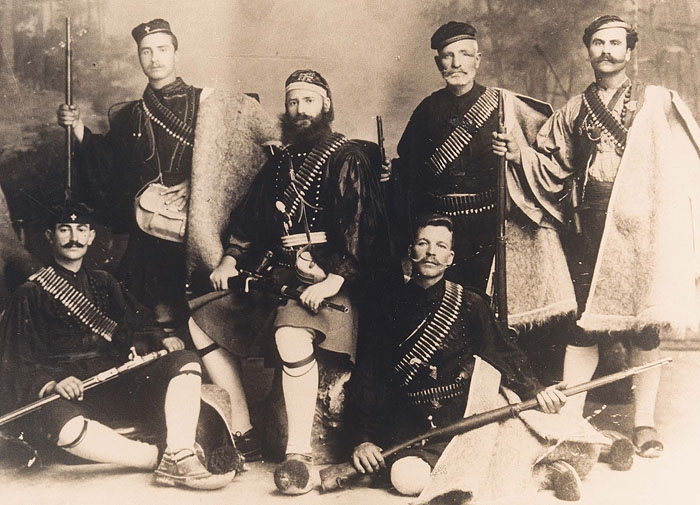The unseen Athonites and the Battle for Macedonia
19 November 2015The Society for Macedonian Studies (4 Ethinikis Aminis Str., Thessaloniki) announce the lecture of Dr. Basil N. Pappas (Monday, 23th of November 2015, 17:00):
The unseen Athonites and the Battle for Macedonia.
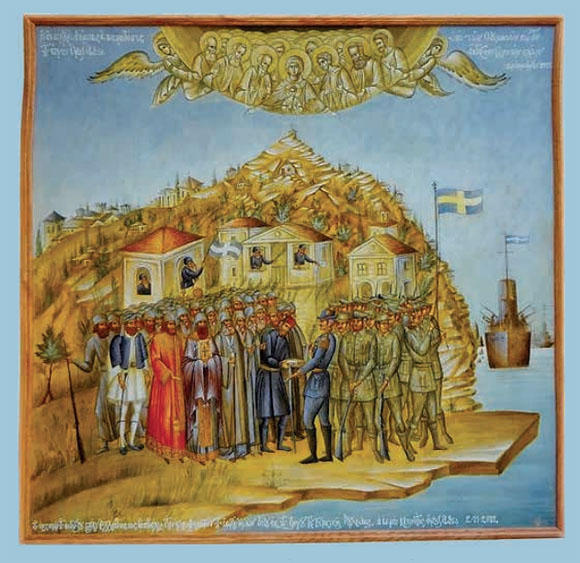
The Liberation of Mount Athos (1912)
The events that took place during the second half of the 19th century until the first decades of the 20th century in Mount Athos and in the broader region of Halkidiki and are related to the contribution of the monks of Mount Athos to the national struggle are almost unknown to this day. Because of this gap, this study contributes to the revival of the historical memory of this region, highlighting primary archival material of the Archives of the monastic State of the Holy Mountain of Athos created during the period 1870-1913. This material relates to the important events that have marked the history of Macedonia until its liberation, such as the Greek-Russian competition in Mount Athos, the Macedonian Struggle and the Balkan Wars. With the emergence of this primary archival material a major document collection organized both chronologically and thematically is now created.
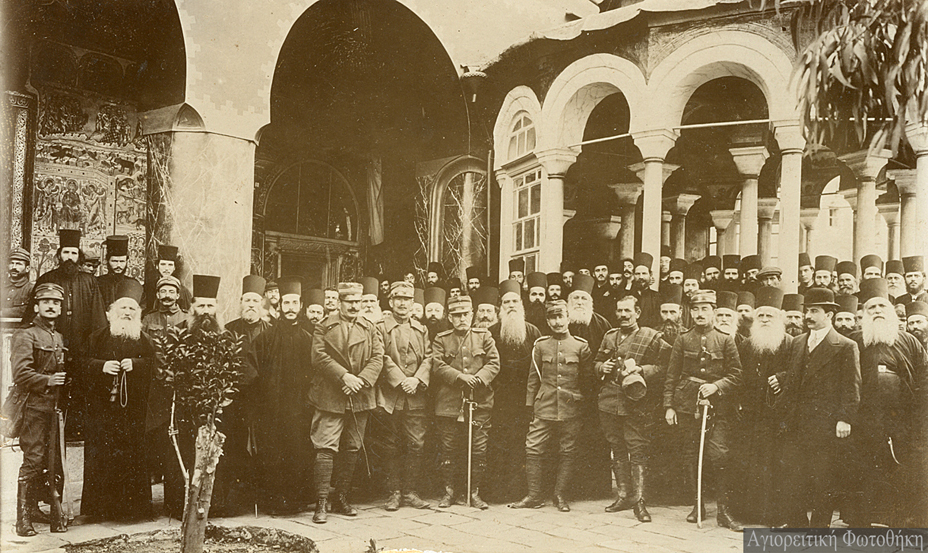
Receiving the representatives of the Army. Monastery of Vatopedi, (20/21th of November 1912), photo by Hierodeacon Prokopios
At the same time, the general situation in Mount Athos and Halkidiki is also described, through the discussion of issues that arose -such as the Keliiotiko {«of the Cells»), the Georgian and that of Onomatoiatres- and the presentation of the activities of Greek chieftains before and during the Macedonian Struggle. In this work is further described the great interest of the monks who lived in the monasteries and their dependencies (Cells, Scetea, Metochia, Kalyves etc.) in education, book publishing, and support of villages, churches, associations and individuals of the wider area. From these archives and documents emerges also a great deal of information on the move of military forces, relations of Greek and Slavic monks, battles, arrests, transport of war material etc.
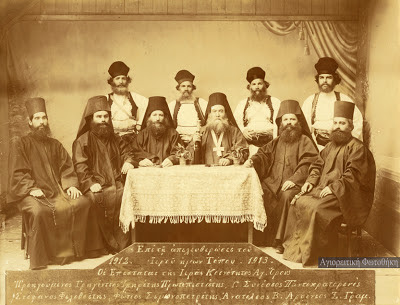
The superintendents of the Holy Mountain for 1912-1913: pro-hegumenos Grigentios from Iviron Monastery, monk Sinesios from Pantokratoros Monastery, monk Stephen from Philotheou Monastery, monk Photios from Simonos Petras Monastery, monk Anatolios from Vatopedi, monk Arsenios from Xenophont. During their superintendency, The Mount Athos was liberated of Ottomans (2th of November 1912), photo by hieromonk Stephen.
Extensive reference is made as well to the monument stock of Mount Athos (architecture, iconography, marble carving, copper carving, wood carving, photography, metalwork, embroidery, Byzantine music, chanting) and to the patriotic associations of Athens showing keen interest in the goings-on in Mount Athos. Particularly mentioned is the Central Macedonian Association of Brothers Gerogiannis who led the action and provided equipment and munitions to Captain Giaglis, the Macedonian fighter from Halkidiki, and his heroic corps; likewise other important associations acted in favor of the Hellenism of Macedonia. Extensive reference is also made to the Athonian personalities which contributed with their studies -but oftentimes with their personal participation as well- to the Struggle (like Kourilas, Ktenas, Gedeon, Chrysostom Lavriotis, Metaxakis, Vlachos, Alexander Lavriotis, Smyrnakis etc.) and to other personalities hailing from Thessaloniki and Halkidiki (Peonidis, Katounis, Chaideftos, Aggelakis etc.).
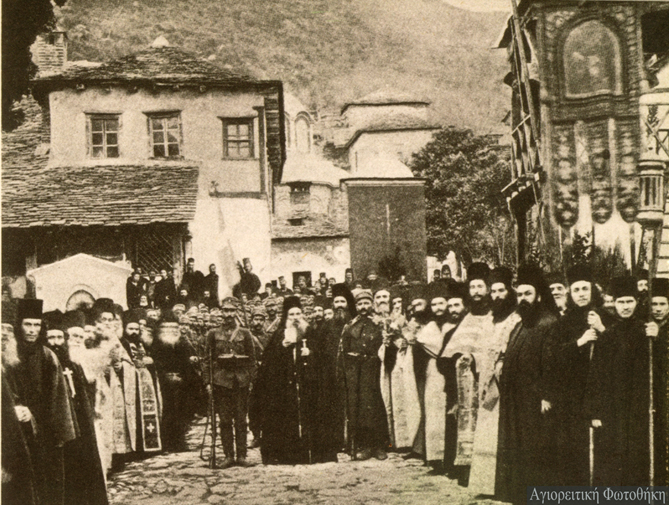
Receiving the soldiers under the leadership of Themistoklis Ailianos at the Monastery of Megisti Lavra. In center, pro-hegumenos Dorotheos. 7th of November 1912, photo by monk Ignatios Ioasapheos
Finally, the study concludes with the events of the liberation of the Holy Mountain by the Greek Navy on 2 November 1912 and what happened after that, with the efforts of the Russian factor for its internationalization, which however was unsuccessful.


